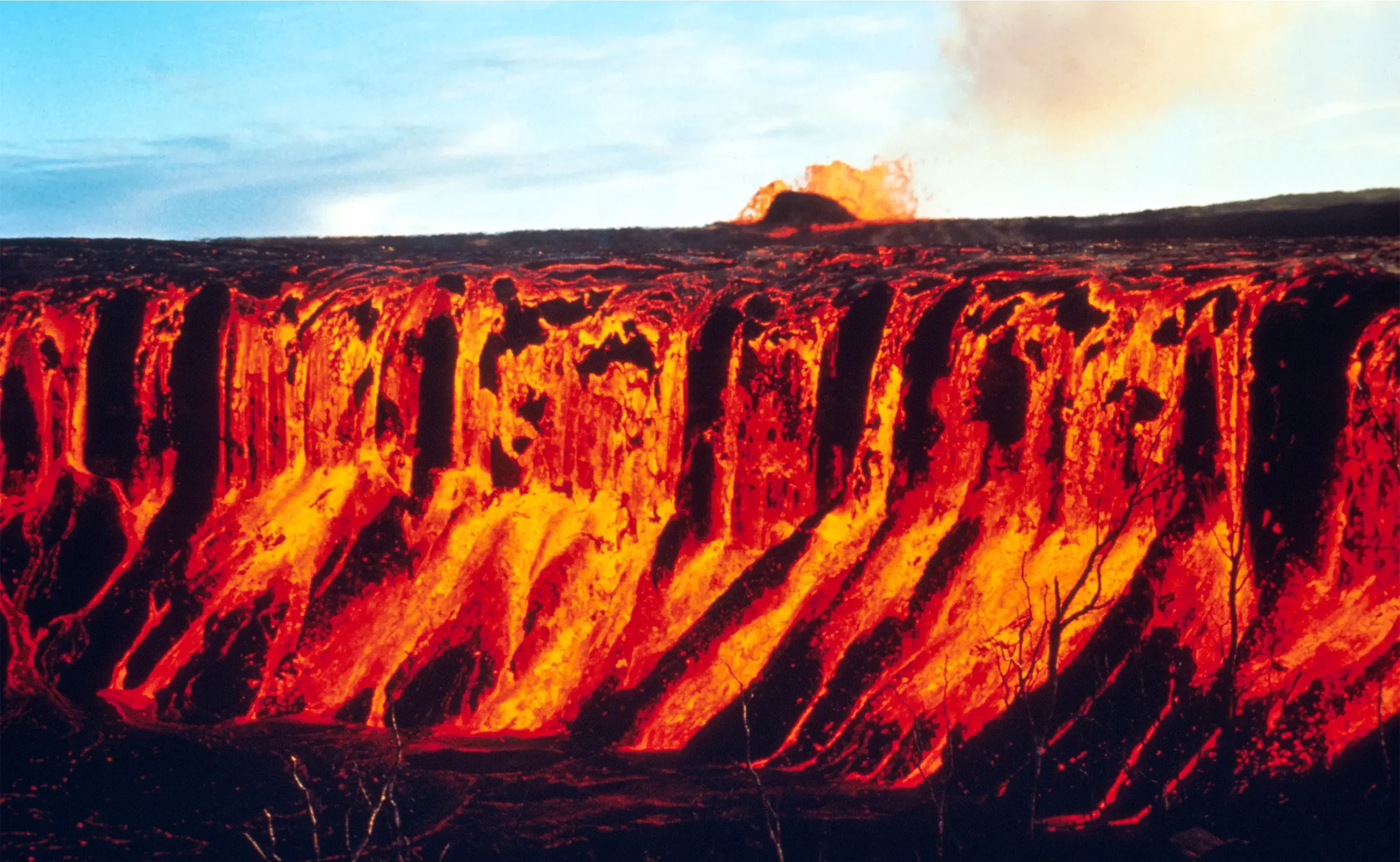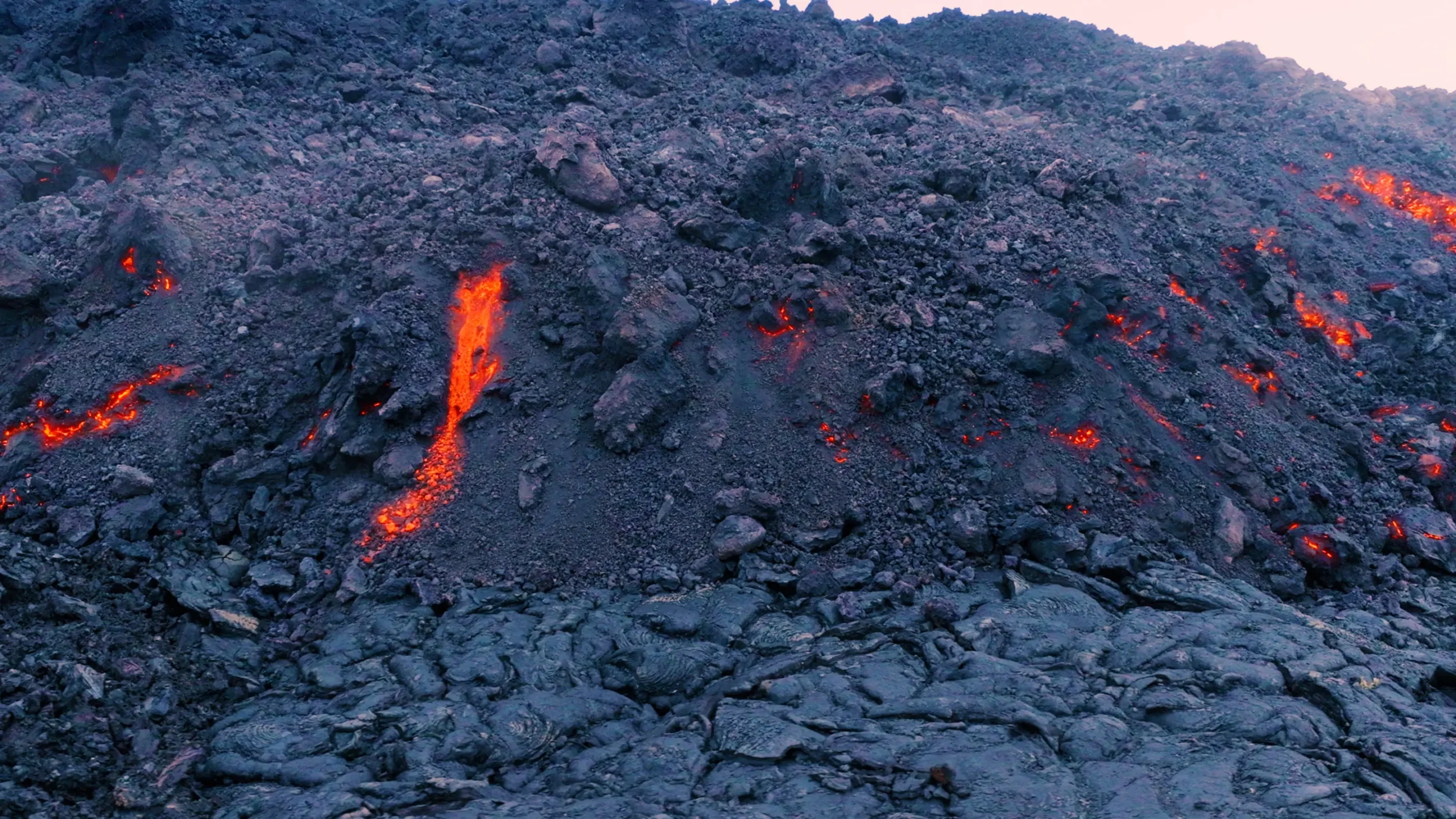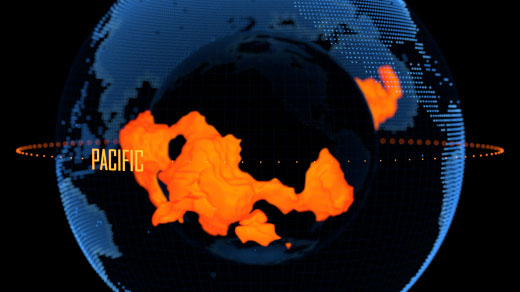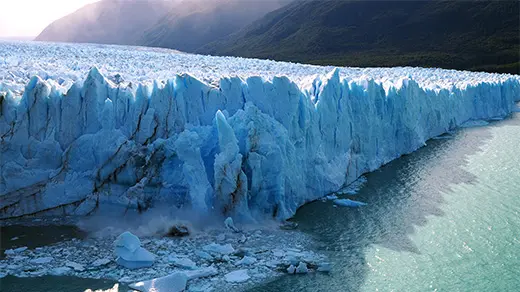Earth’s Core Appears To Be Leaking Up and Out of Earth’s Surface
Introduction
All the activity on Earth’s surface — erupting volcanoes, shifting tectonic plates, restless seas and myriad forms of life — depends on the two-part engine under the hood. Directly beneath Earth’s crust lies the mantle: rock that melts, churns and flows like putty, driving the volcanic and tectonic activity at the surface. And below that, there’s the outer core, a liquid-metal ocean whose swirling streams surround the planet with a protective magnetic field.
A longtime assumption of geoscientists is that the boundary between the mantle and the outer core is clear and severe. After all, lighter mantle rock should essentially float atop the denser metallic core. But a recently published pair of studies tells a surprising story, one that was already suspected: Earth’s core is leaking material. This stuff is making its way right up to the surface, potentially ferried through two monster-size blobs sitting at the core-mantle boundary.
This “is kind of crazy,” said Harriet Lau, a geodynamicist at Brown University who was not involved with either study. If material is effusing from the core into the mantle, is the boundary between them “as distinct as we think?”
The research concludes that this abyssal wall has doorways. “It’s a really exciting suggestion,” said Forrest Horton, a petrologist at the Woods Hole Oceanographic Institution who was not involved with either study.
The Heart of the Matter
The internal architecture of the planet has largely been deduced from the passage of seismic waves. When an earthquake blasts said waves through the planet, they change speed and direction depending on what they encounter, slowing down when traveling through hotter material and speeding up when passing through colder stuff. Some seismic waves zip through anything, while others (notably S waves) cannot pass through liquids.
In the late 19th century, seismologists began to use seismic-wave data to sketch out a picture of a layer-cake planet — one with a rocky mantle and a liquid-metal center.

Inge Lehmann inferred the existence of Earth’s solid inner core in 1936.
Even Neuhaus/Wikimedia Commons
Then, in the 1930s, Inge Lehmann, a self-taught Danish seismologist, observed that an earthquake’s seismic waves didn’t always plunge through the core and appear on roughly the opposite side of the world. Instead, some of these seismic waves popped up in more offset geographical locations. Seismologists chalked up these spurious readings to instrument errors. But in her famous 1936 paper, Lehmann came to a different conclusion, that “the Earth consists of a core and a mantle, but that inside the core there is an inner core” — a solid metal orb that can deflect seismic waves like ping-pong balls. Her word quickly became scientific gospel. Within Earth’s outer core is a solid iron-nickel inner core the size of a small planet.
Seismology has advanced since then. The inner core Lehmann discovered not only spins around, but speeds up and slows down. A study published just this year also revealed that the core periodically changes shape.
And the mantle, which makes up 84% of the planet’s volume, is now known to be lined with plumes: scorching-hot columns of ascending rock that forge chains of giant volcanoes (like the Hawaiian archipelago) atop the Earth’s ever-shifting crust.
Seismic waves also mark a clear barrier between the lighter-but-solid mantle and the denser-but-liquid outer core. This core-mantle boundary segregates two very different geologic realms. “In a sense, it’s the meeting of two planets,” says Vedran Lekić, a seismologist at the University of Maryland. Geoscientists long assumed that, aside from heat, nothing significant could cross from the core into the mantle.
And yet apparently it does.
Earth’s Leaky Core
Hints that matter is somehow breaching the starkest density barrier within the planet began to emerge half a century ago, in the form of anomalous helium isotopes extracted from volcanic rock.
There are two stable isotopes of helium: helium-3 and helium-4 (which has an extra neutron). Helium-4 is produced by the radioactive decay of uranium and thorium in Earth’s mantle, and so (through tectonic and volcanic activity) it’s commonly found in the mantle and at the surface. Helium-3 was mostly formed in the aftermath of the Big Bang and was incorporated into the Earth during its formation 4.6 billion years ago.
Samuel Velasco/Quanta Magazine
In the late 1970s, though, geoscientists detected anomalously high levels of helium-3 in lava sampled from mid-ocean ridges — the fissures between two divorcing tectonic plates — and plume-powered volcanoes. These sampling locations implied that the helium-3 came from a deep source. But which source?
“I think it’s the core,” said Matthias Willbold, a geochemist at the University of Göttingen in Germany. The core has presumably been isolated for billions of years, making it a likely long-term storage location for primordial isotopes. But others have argued that the helium-3 could instead be coming from somewhere deep and stable in the lowermost mantle.
Helium-3 isn’t smoking-gun evidence of a leaky core. But over the years, ancient isotopic signatures of tungsten and hydrogen (the focus of a paper published just this year) have also suggested that the core and mantle are somehow mixing.
In search of more definitive evidence, Willbold’s team zeroed in on an element named ruthenium. It’s highly siderophile (“iron-loving”), meaning that, when given the choice between a metallic fluid and a rocky one, it will stick with the metal. And indeed, the mantle has a dearth of siderophile elements. Billions of years ago, when Earth was a giant ball of magma, dense droplets of liquid iron rained down into the planet’s depths, and this iron rain took the highly siderophile elements along for the ride, sequestering them in the core.

An eruption of the Kīlauea volcano in Hawai‘i in 1969.
U.S. Geological Survey/Science Source
Ruthenium-100, in particular, would have made it into the core during Earth’s formation. Then, later in the planet’s history, a swarm of meteors bombarded the surface. Based on meteorite samples, this added various other isotopes of ruthenium to the crust and mantle. With no more liquid iron precipitating downward, these other isotopes couldn’t reach the core, leaving the core’s ruthenium-100 stores unpolluted. For this reason, ruthenium-100 is a more clear-cut indicator of a leaky core than other isotopic tracers, Willbold said.
He and his team looked for the isotope in volcanic rocks from the Galápagos Islands, Hawai‘i, and Canada’s Baffin Island — all of which are linked to mantle plumes. Teasing out minuscule quantities of ruthenium-100 was a painstaking endeavor. “It’s pretty much like distilling a whiskey,” he said, but a thousand times more difficult. In the end, as they reported in the journal Nature in May, they found ruthenium-100 at all three sites, along with helium-3 anomalies.
Horton noted that the team’s sample size is small, so the results are “a little tentative.” But nobody doubts their rigor. Richard Walker, a geochemist at the University of Maryland who was not involved with the work, said the study is “an impressive tour de force of analytical prowess.”
These anomalies have a straightforward explanation. “You’re basically taking some core material and stuffing it into the mantle,” Willbold said.
The Core-Mantle Monsters
The ruthenium anomalies make it difficult to argue that the core isn’t, in some way, leaking. But how is it happening? Already, there’s a spirited debate in the community. Perhaps elements in the core are physically diffusing across the core-mantle boundary, going from a zone of high concentration to one of low concentration. Or perhaps a chemical reaction of some sort is actively draining them out of the core.
Another possibility involves the two monsters lurking in the mantle’s deepest reaches.
Outlines of these objects — which are labeled with a range of clumsy scientific acronyms, but which many researchers simply refer to as “the blobs” — were spotted in the late 1970s. A highly detailed global seismic map created in 1984 left no doubt: Two continent-size masses occupy as much as 30% of the core-mantle boundary, one of them thousands of kilometers below Africa, the other under the Pacific.
Much about them is puzzling. The slow passage of seismic waves through them suggests that they are extremely hot, but also dense enough not to float up through the mantle. One guess is that they’re the remains of tectonic slabs from Earth’s surface that plunged intact into the lower mantle. Another is that they’re the shattered pieces of a protoplanet that smashed into the magma-covered baby Earth.
Nobody knows. What’s more certain, though, is that many of Earth’s volcano-powered plumes seem to sprout from these two blobs. In light of Willbold’s recent study, that implies that the core may be leaking material to the surface via the blobs. But if that’s the case, are the blobs actively mining the core, or are they acting more like bridges?

Sujania Talavera-Soza, a seismologist at Utrecht University, has examined the “blobs” sitting on the core-mantle boundary.
Courtesy of Sujania Talavera-Soza
Understanding what they’re made of may help. Rocks and magma contain crystals: grains made from an array of different chemical compounds. Crystals are a little like the fundamental particles of geology. If you want to understand the properties of anything from a small pebble to a tectonic plate, you need to examine its crystals and the structure they form. The blobs are no different — so what kinds of crystals do they have?
In a study published in Nature in January, a team led by Sujania Talavera-Soza, a seismologist at Utrecht University in the Netherlands, looked at the passage of seismic waves through the blobs. They were less interested in speed changes, and more focused on how those waves lost energy. A seismic wave passing through a mashup of lots of smaller crystals loses more energy than a wave passing through a region filled with larger crystals. Earth’s blobs seem like they should be packed with many small crystals; being several hundred degrees hotter than the surrounding mantle, they should be melting stuff while actively churning about, both of which should prevent large crystals from forming.
Talavera-Soza’s team wanted to check. They examined preexisting seismic surveys of the lower mantle to see how seismic waves are weakened as they zip through the blobs. To their shock, seismic waves appear to lose very little energy on their journeys, suggesting the blobs are made of very large crystals after all.
“We spent a long time trying to convince ourselves that the data was correct,” Talavera-Soza said. “Why are we seeing this?”
If future research validates their work, it could mean that core material is making its way into the mantle through a labyrinth of big crystals — something that may illuminate why there’s leakage, and how it’s taking place.
There are, as ever, far more questions than answers at this stage. But one thing can now be said with near certainty: Matter that sank to Earth’s center when it was a vast magmatic ocean billions of years ago is now, somehow, erupting under an azure sky.







